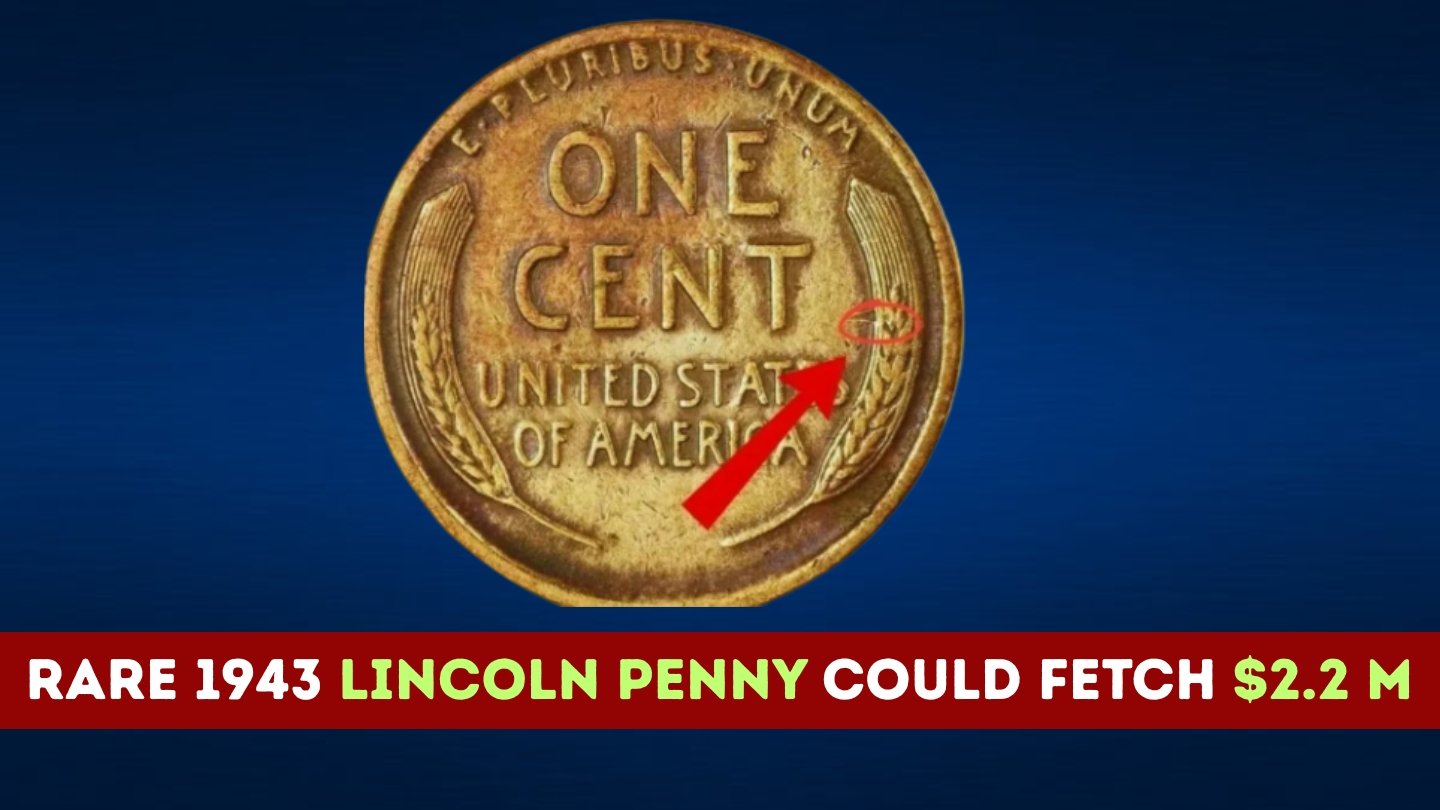If you’ve ever tossed a handful of old pennies into a jar without thinking twice, you might want to give them another look. Because, believe it or not, one particular penny from 1943 could make you a millionaire overnight. Yes, you read that right — a single rare 1943 Lincoln penny has been valued at up to $2.2 million at auctions. Sounds unreal, doesn’t it? But it’s absolutely true.
So, what makes this seemingly ordinary copper coin so incredibly valuable? Let’s dive into its fascinating backstory and find out why collectors are willing to pay such jaw-dropping prices for it.
The Story Behind the 1943 Lincoln Penny
To understand why the 1943 penny is special, we need to go back to World War II. During this period, copper was in high demand for making ammunition, wiring, and other war materials. To conserve copper, the U.S. Mint decided to make pennies out of zinc-coated steel instead of the usual copper.
Millions of these steel pennies were minted in 1943 — they looked silvery instead of the usual reddish-brown. However, a few copper planchets (the blank discs used to make coins) from 1942 accidentally got mixed into the presses at the start of 1943.
The result? A small number of 1943 copper Lincoln cents were struck by mistake. And those accidental minting errors are now among the most sought-after coins in American history.
Why It’s Worth Millions
It all comes down to rarity and history. Numismatists (that’s a fancy word for coin collectors) estimate that only about 20 to 30 genuine 1943 copper pennies were ever made across all U.S. mints — Philadelphia, Denver, and San Francisco.
When a coin is that rare and has such an interesting story behind it, collectors will do almost anything to get their hands on one. In auctions, these pennies have fetched prices upwards of $1 million, with the finest examples crossing the $2.2 million mark.
It’s not just a coin; it’s a piece of history, a symbol of wartime America, and a collector’s dream.
How to Identify a 1943 Copper Penny
Now, here’s the fun part — checking if you might have one hiding in your collection.
Here’s a quick comparison to help you spot the difference:
| Feature | 1943 Steel Penny | 1943 Copper Penny |
|---|---|---|
| Color | Silvery gray | Reddish-brown |
| Magnet Test | Sticks to magnet | Does not stick |
| Weight | 2.7 grams | 3.1 grams |
| Material | Zinc-coated steel | Copper |
| Estimated Value | 5 to 10 cents (common) | Up to $2.2 million (rare) |
If your 1943 penny doesn’t stick to a magnet and looks copper-colored, you could be sitting on a fortune.
Some Famous Auction Sales
Over the years, several 1943 copper pennies have made headlines at major coin auctions. Here are a few notable sales that caught the world’s attention:
- 2010 – A 1943-D (Denver Mint) copper penny sold for $1.7 million.
- 2019 – Another 1943 copper cent from the Philadelphia Mint sold for $204,000 at a Heritage Auction.
- 2023 – A top-grade, certified example fetched $2.2 million, setting a new record for this coin type.
It’s safe to say that collectors continue to compete fiercely whenever one of these historic coins appears on the market.
Where Could You Find One?
It’s possible (though very rare) that one could still be floating around in circulation or hidden in an old coin jar. But most likely, these coins are now part of private collections. Still, many people have discovered valuable coins in the most unexpected places — old family albums, inherited coin boxes, or estate sales.
If you happen to find a 1943 penny that looks copper, don’t rush to sell it. Get it authenticated by a professional grading service like PCGS (Professional Coin Grading Service) or NGC (Numismatic Guaranty Company). A proper certification can make all the difference when it comes to determining the true value.
Why Collectors Love It
The 1943 copper penny isn’t just about money — it’s about American history. It represents a time when the nation was at war, and even small materials like copper were precious resources. Owning one feels like owning a tangible piece of that history.
Collectors also love how accidental rarity plays a role here. It wasn’t created intentionally, and that makes it all the more fascinating.
Quick Recap
Let’s sum it up neatly:
- Year: 1943
- Composition: Copper (error) instead of steel
- Mint locations: Philadelphia, Denver, San Francisco
- Rarity: Only 20–30 known to exist
- Estimated value: Up to $2.2 million
- Key feature: Doesn’t stick to a magnet
So, next time you come across a jar of old pennies, take a closer look. You never know — one of them might be worth far more than you’d ever imagine.
It’s fascinating how a small, one-cent coin can carry such enormous value and history. The 1943 copper Lincoln penny reminds us that even the tiniest pieces of change can change lives.
If nothing else, it’s a good reminder to appreciate the details — because sometimes, the smallest mistakes create the greatest treasures.
FAQs
1. How can I tell if my 1943 penny is copper or steel?
Try the magnet test. If it sticks, it’s steel. If it doesn’t, and it’s reddish-brown, it could be copper.
2. Where can I sell a rare 1943 copper penny?
You can sell it through reputable coin auction houses like Heritage Auctions or Stack’s Bowers, or via a certified numismatic dealer.
3. How many 1943 copper pennies are known to exist?
Experts believe between 20 and 30 genuine examples survive today.
4. What makes this coin so valuable?
Its accidental minting, extreme rarity, and historical significance drive its high value.
5. Could one still be in circulation?
It’s highly unlikely, but not impossible. Many were discovered decades later in collections or old savings jars.

